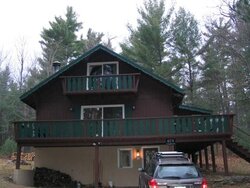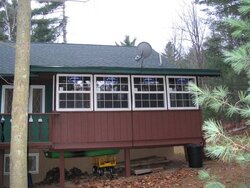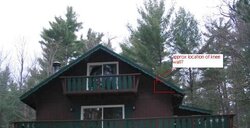Maybe I should have left well enough alone. Had no problems last winter, (1st year in the house) but a few weeks ago, after several heavy snowfalls piling up,
I shoveled off the low pitch roof over the porch. There was 16 to 18 inches of snow on the roof. This is an unheated porch, used to be just screens, but last fall I enclosed with vinyl windows and doors. The other day after some additional snowfalls and some thaw - freeze cycles, it iced over, and with the thaws started leaking like crazy. There was a 2 or 3 inch deep ridge of ice a few inches wide where the steep roof meets the porch roof and another one at the drip edge. The whole roof, including the porch is architectural shingles, only 4 years old.
Come spriing, I"m thinking of taking the shingles off the porch and putting down rolled roofing, and leaving it alone over the winter. Hell, the house has been here 30 years thru many winters and the porch hasn't caved in yet, no sag at all in the beams or floor. Would this solve my problem? If not, suggestions? The pix below should give a better idea of my situation.
I shoveled off the low pitch roof over the porch. There was 16 to 18 inches of snow on the roof. This is an unheated porch, used to be just screens, but last fall I enclosed with vinyl windows and doors. The other day after some additional snowfalls and some thaw - freeze cycles, it iced over, and with the thaws started leaking like crazy. There was a 2 or 3 inch deep ridge of ice a few inches wide where the steep roof meets the porch roof and another one at the drip edge. The whole roof, including the porch is architectural shingles, only 4 years old.
Come spriing, I"m thinking of taking the shingles off the porch and putting down rolled roofing, and leaving it alone over the winter. Hell, the house has been here 30 years thru many winters and the porch hasn't caved in yet, no sag at all in the beams or floor. Would this solve my problem? If not, suggestions? The pix below should give a better idea of my situation.




